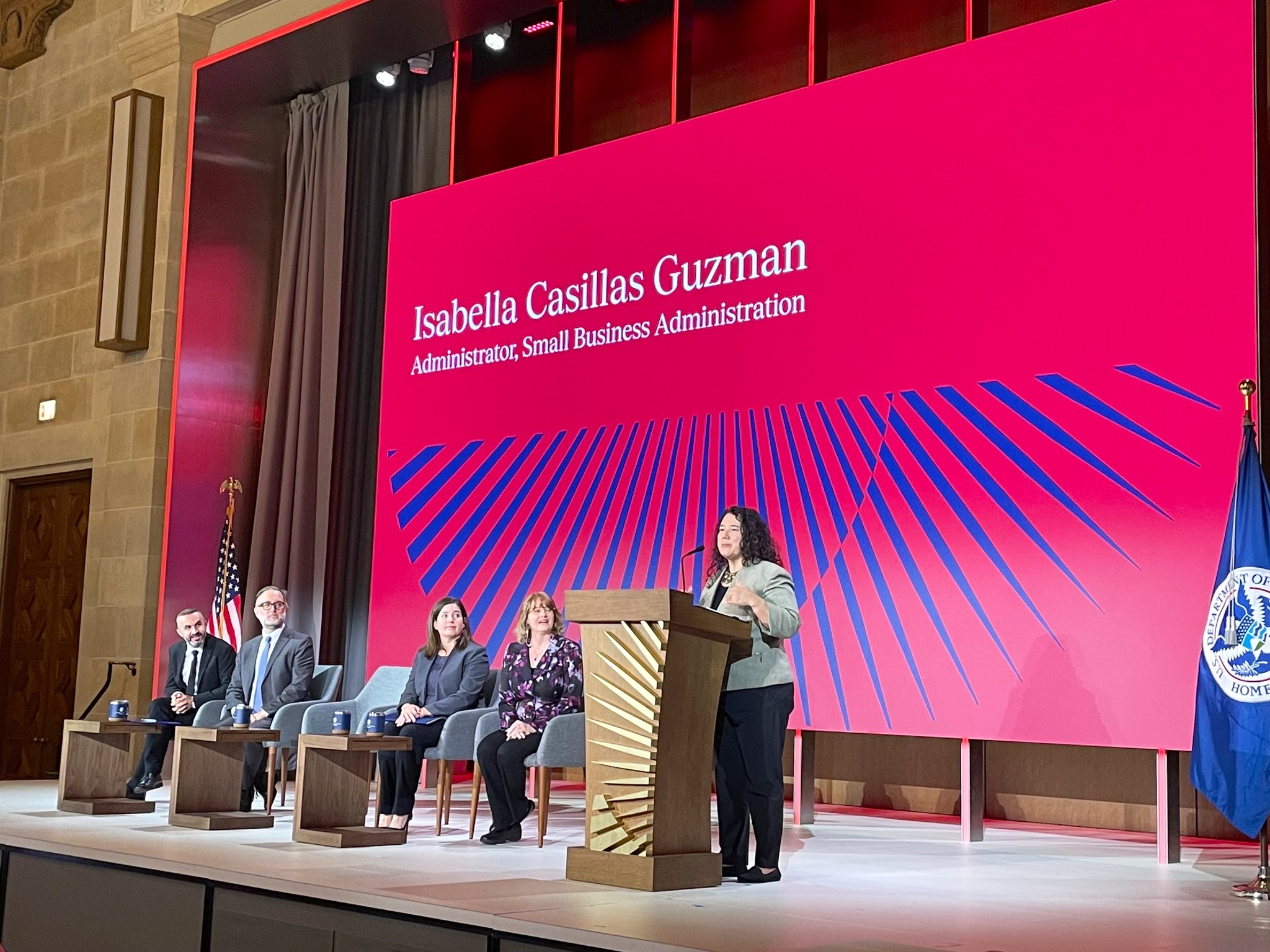
A healthy Pennsylvania for all: Dr. Rachel Levine on COVID-19 and leading the Commonwealth during the pandemic
During a conversation with AL DÍA, the Pennsylvania Secretary of Health discussed the challenges of the pandemic, the need for more diversity in medicine, and…
Throughout the global health crisis of COVID-19, Dr. Rachel Levine has become one of the most visible faces of the state of Pennsylvania.
As the Pennsylvania Secretary of Health, she has played a prominent role in leading the public health response on COVID-19 pandemic in the Commonwealth. Since March, she has been providing valuable information and answering critical questions through daily press briefings as the state continues to navigate the challenges brought on by the pandemic.
“I’ve always felt that public health preparedness was important because of the potential risk of a global pandemic. And unfortunately that has come to pass with the global health challenge of COVID-19, which clearly has been the biggest public health problem we have faced globally, in the United States, and in Pennsylvania,” Dr. Rachel Levine said during a conversation with AL DÍA.
Dr. Levine has worked with the Wolf Administration since the beginning of the Governor’s first term in January 2015. She first joined as the Physician General of the Commonwealth, before taking on her current role as Secretary of Health in July 2017.
“Our vision is a healthy Pennsylvania for all,” said Levine. “We’re really working towards health care and health equity for everyone.”
Dr. Levine’s original medical training was as a pediatrician, more specifically as an adolescent medicine specialist.
Prior to joining the Wolf Administration, Levine worked at Penn State Hershey Medical Center for more than 20 years in a variety of roles, after originally coming to Pennsylvania in 1993. She also was a faculty member at Penn State College of Medicine.
Before that, she received her training and worked at Mount Sinai Hospital in New York City for five years.
Levine is a graduate of Harvard College, where she majored in biology, with an interest in going to medical school. From there, she attended the Tulane University School of Medicine and decided to go into the field of pediatrics.
This led her to Mount Sinai Hospital, where Levine completed her internship and residency, and then a fellowship in the field of adolescent medicine, specializing in teenagers.
The Latino population in the U.S. continues to grow exponentially. However, according to the statistics from the Association of American Medical Colleges (AAMC), only about 5.8% of active physicians in the United States are Latino.
That underrepresentation is reflective of the lack of Latinos in medical schools across the nation as a whole.
“It’s tremendously important to encourage diversity in medicine … and in medical school,” said Levine.
While at the Penn State College of Medicine, Levine was part of the school’s admissions committee and also co-chaired the diversity admissions committee for several years.
As a recommendation to increase the level of diversity in medicine, she stressed the importance of considering the field of medicine as a career path as early as high school and college.
“It’s a tremendously rewarding field,” said Levine.
“Basically, through our career, all we try to do is help people,” she added.
She noted that medical schools often are looking for students with balanced resumes. Qualifications usually include students who did well in college, had experiences that explained their interest in attending medical school, the ability to shadow physicians across different settings, has an interest in research and volunteering experience.
“That type of balanced application was what we were looking for and we wanted students that we felt that would thrive in medical school,” Levine said.
For more Latinos to enter into medical school, Levine noted that it was also incumbent upon the medical schools to put forth even more effort in recruiting and accepting more qualified Latino medical students.
“I think that medical schools do have a dedication to diversity, but I think that they need to look to do more, to look harder, to be looking for qualified Latino students to accept.”
The first step of that is for more Latino students to apply to medical school, and then for the medical schools to take part in a more holistic admissions process.
With all the challenges and realities that have been highlighted by the ongoing COVID-19 pandemic, one of the most prevalent is the health disparities that exist for different communities across the nation, but also at the state level.
Latinos and African Americans have higher rates of infections, hospitalizations and death from COVID-19 than the white population.
“There is nothing genetic about that, it is just demonstrating the health disparities that are present in Pennsylvania and throughout our nation,” said Levine.
At the Pennsylvania Department of Health, health equity is considered a priority. In 200, the Office of Health Equity (OHE) was integrated into the department as a way to increase public awareness about health equities in the Commonwealth, advocate for programs that go towards addressing health disparities, implement policies that aim to improvement the health status of underserved communities, and overall to help eliminate health disparities in Pennsylvania.
The work done by Governor Wolf and the Pennsylvania Department of Health is vast, in that it addresses the social determinants of health. Those are societal influences that can impact health, and include economic status, educational opportunities, housing, transportation, nutrition and the environment.
RELATED CONTENT
“All of those to me are not just societal issues, they are health issues and they greatly impact health equity and the health disparities we’ve been talking about,” said Levine.
Since the start of the pandemic, Levine and the Pennsylvania Department of Health has made sure to effectively communicate the severity of COVID-19.
“This is not just another flu,” Levine said.
“This is a novel coronavirus, which means... medicine had never seen this before and it was very challenging for treatment in the spring,” she added.
From that point on, the Department has followed the guidelines of the CDC in encouraging the public to help slow the spread of the coronavirus through containment (such as testing, contact tracing, isolation and quarantine), mitigation (wearing masks, social distancing, avoiding crowds and staying at home), and treatments.
In the past couple months, the Moderna and Pfizer vaccines have been rolling out to help slow the spread of the virus.
When it comes to the distribution of the vaccine, the nation is in Phase 1a. This phase prioritizes those who are at the highest risk of testing positive for COVID-19, which includes healthcare workers on the frontlines and those in long-term care facilities, such as staff, and residents and other people working in healthcare settings.
The next two phases — 1b and 1c — will prioritize other frontline workers and public health officials aged 65 and older, respectively.
While the rest of the population waits to receive their doses of the vaccine, Levine stresses the importance of continuing to follow the guidelines first presented by the CDC in March.
“Especially right now in January and February, I think that we are at great risk and we need to wear a mask, wash hands, [and] social distance,” she said. “We need to do that now until we have vaccinated enough of the population to be able to stop the spread.”
Levine anticipates that it is possible that the general population in the Commonwealth, which is Phase 2 of the rollout, could begin getting their vaccinations by late spring or early summer. However, she noted that much of it depends on how many vaccines are available, produced and sent to Pennsylvania for distribution and administration.
In the meantime, two additional vaccines — AstraZeneca and Johnson & Johnson — are currently being clinically tested with hopes of being approved by the springtime.
While the Pfizer and Moderna vaccines require two doses, the upcoming Johnson & Johnson vaccine would only require one dose.
“It offers a lot of potential, particularly from a health equity lens, where it might be very difficult to get people to come back and to recall them for various reasons,” said Levine.
At the moment, none of the vaccines have yet been approved for children. Therefore, it is unclear if there will be approved vaccines for children who anticipate going to school next fall.
“If you look at that whole process, it could take a year. It could take all of 2021 to complete that,” said Levine. “We’ll do everything we possibly can to bring it in earlier, but it’s important to be realistic.”











LEAVE A COMMENT:
Join the discussion! Leave a comment.